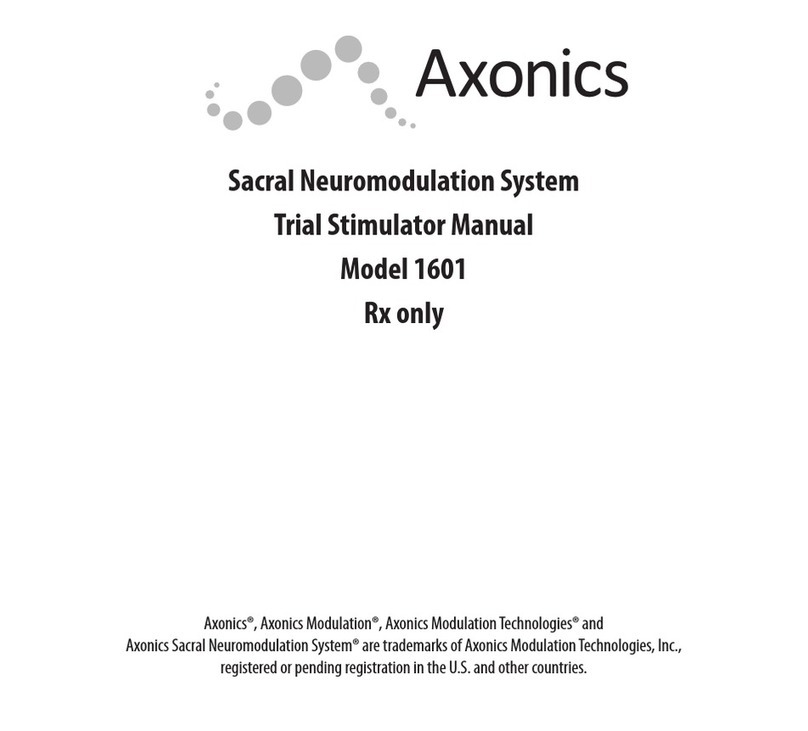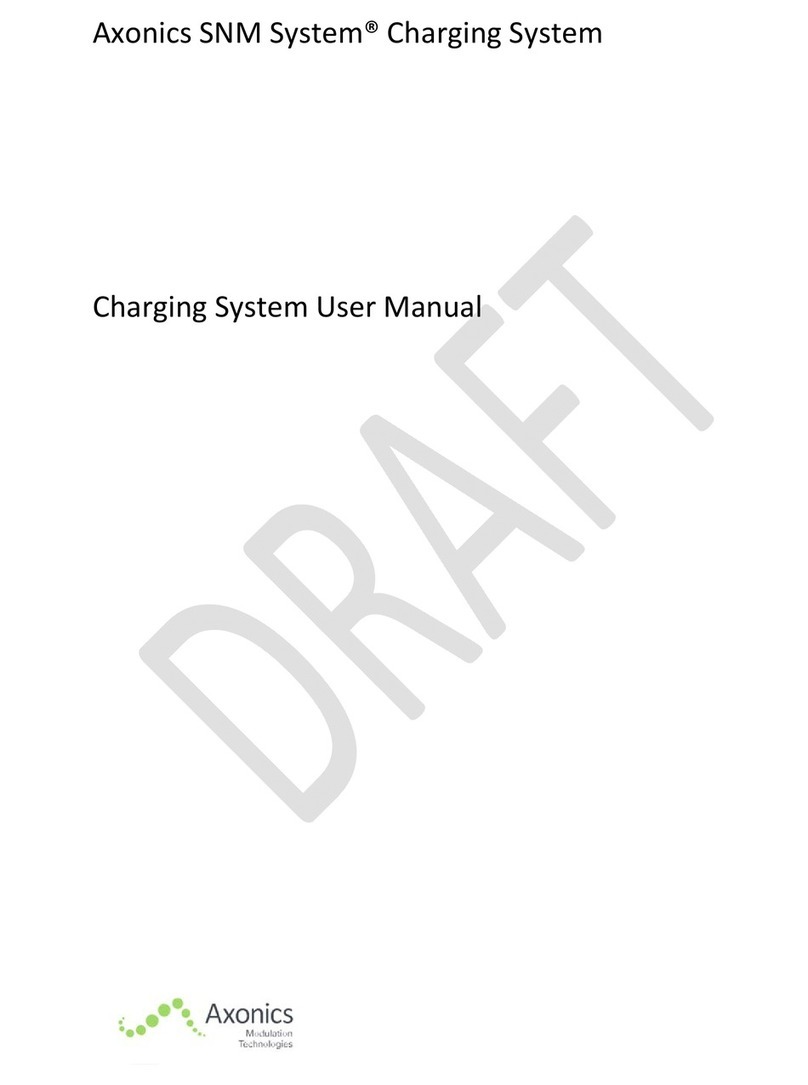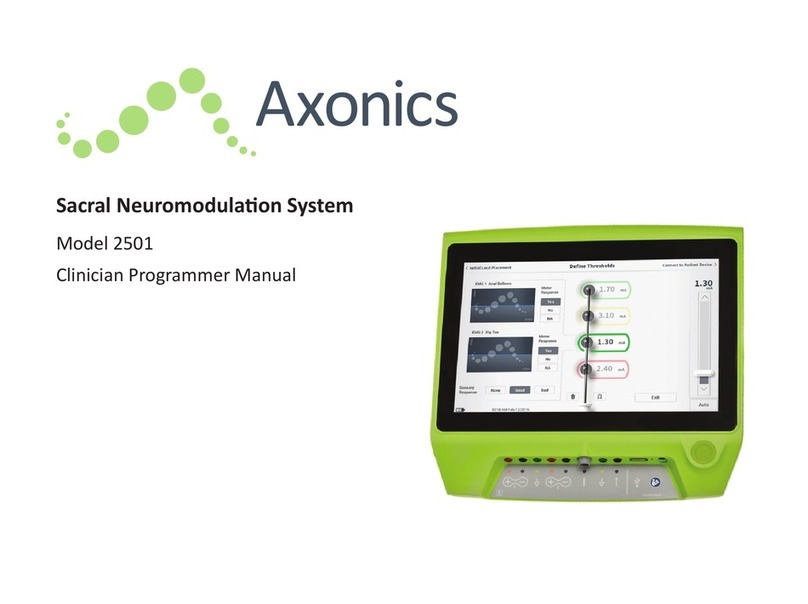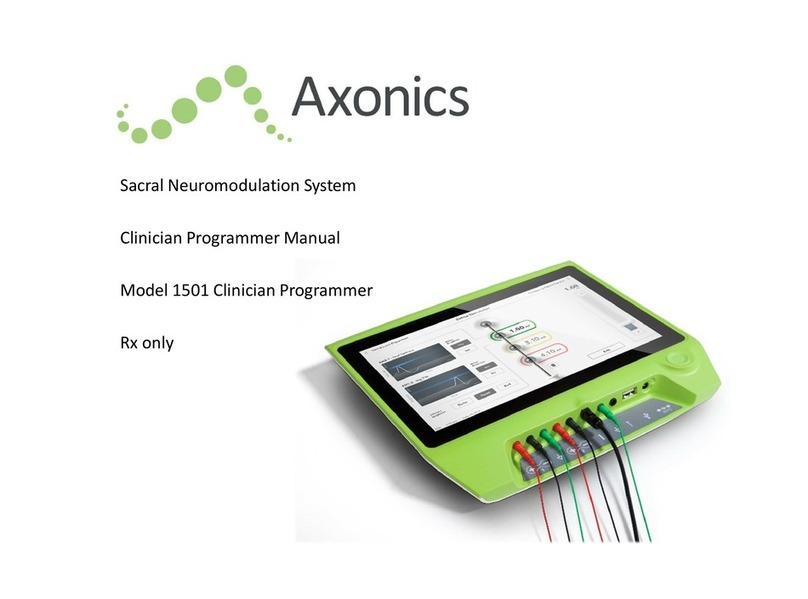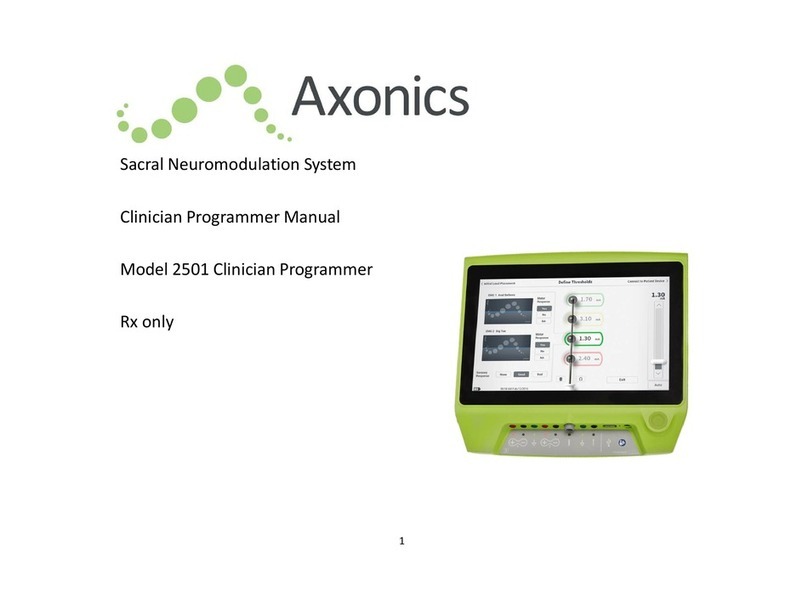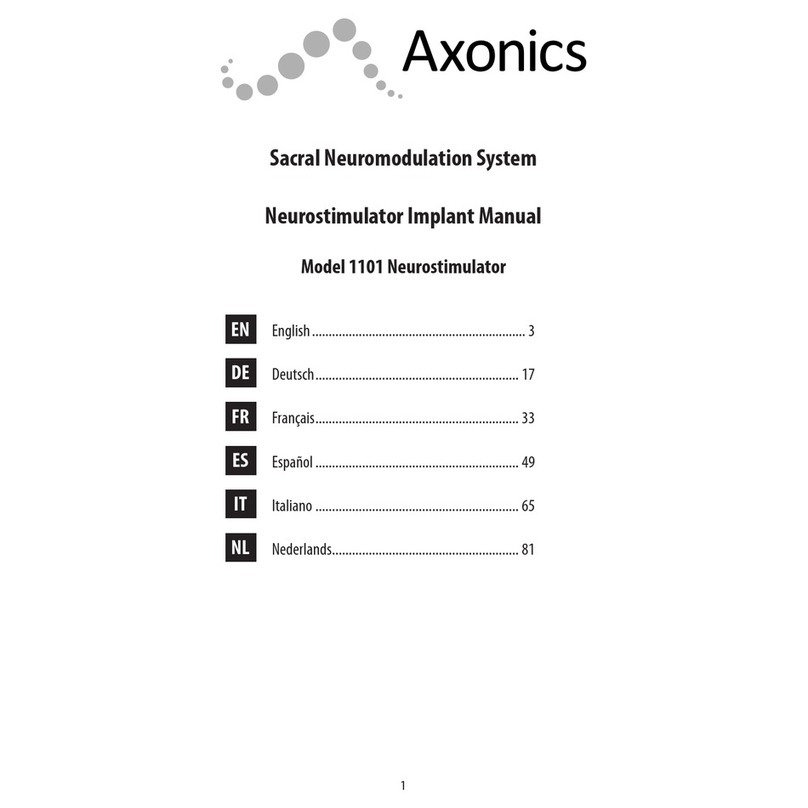
7
Additionally, patients should minimize their exposure to these devices by not lingering in the immediate area of the device. Sources
of strong EMI can result in the following:
• Serious patient injury, resulting from heating of theTrial Stimulator and/or leads.This may damage the surrounding tissue.
• System damage, which may require surgical replacement due to change in symptom control.
• OperationalchangestotheTrialStimulator,causingittoturn on or o ortoresetthesettings,resultingin lossofstimulation
or return of symptoms. Re-programming by the clinician may be needed.
• Unexpected changes in stimulation which may be experienced as a jolting or shocking sensation. While the sensation may
be uncomfortable, the device would not be damaged nor would it cause direct injury to the patient. In rare cases, the change in
stimulation may cause the patient to fall and be injured.
Case Damage
TheTrial Stimulator contains battery chemicals that could cause severe burns if the case were ruptured or pierced.
Effects on other implanted devices
The effect of the Axonics SNM System on the operation of other implanted devices is not known. This includes devices such as
cardiac devices, other Neurostimulators, and implantable drug pumps. In particular, if the Axonics device is on the body near one of
these devices, they may have sensing problems and/or inappropriate device responses. Clinicians involved with both devices should
investigate potential interference issues before surgery. The programming of the devices may need to be optimized to provide
maximum benefit from both devices.
Trial Stimulator interaction with implanted cardiac devices
When a patient needs both an Axonics SNM System and an implanted cardiac device, interactions between the two devices should
be discussed by the patients’ physicians before surgery. Such devices may include pacemakers or defibrillators. The physicians
involved may include cardiologists, electrophysiologists, urologists, and urogynecologist. To reduce potential interference, the TS
should be worn on opposite side of the body. It should also be worn as far away as practical from an implanted cardiac device.
The stimulation pulses produced by the Axonics SNM System may interact with cardiac devices that sense cardiac activity. This may
lead to inappropriate behavior of the cardiac device.
Unauthorized modifications to the Trial Stimulator
No modification of any component of the Axonics SNM System is allowed. Modification may result in more risks and hazards.
PRECAUTIONS
Clinician programming
Parameter adjustment –The steps below should be taken to prevent sudden stimulation changes that lead to an uncomfortable
110-0049 rev G_output.indd 7 11/20/18 7:08 AM






